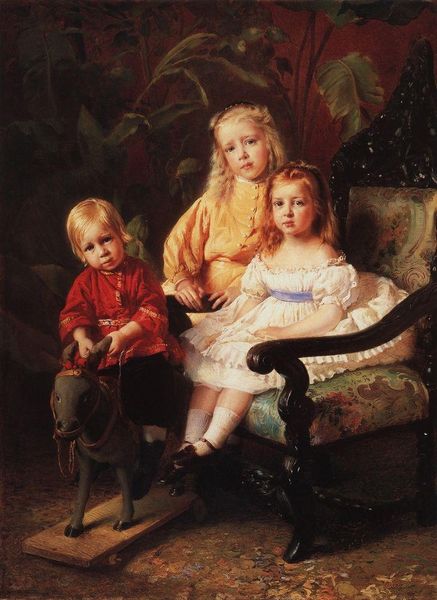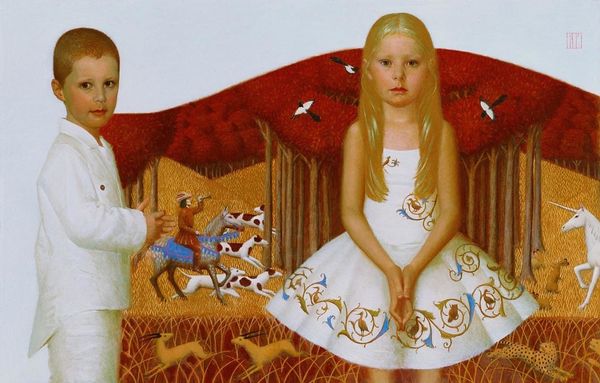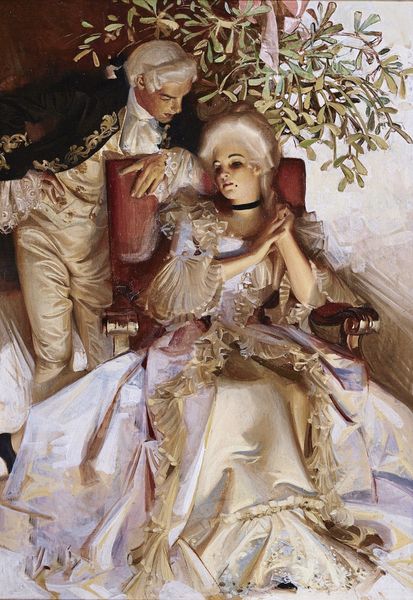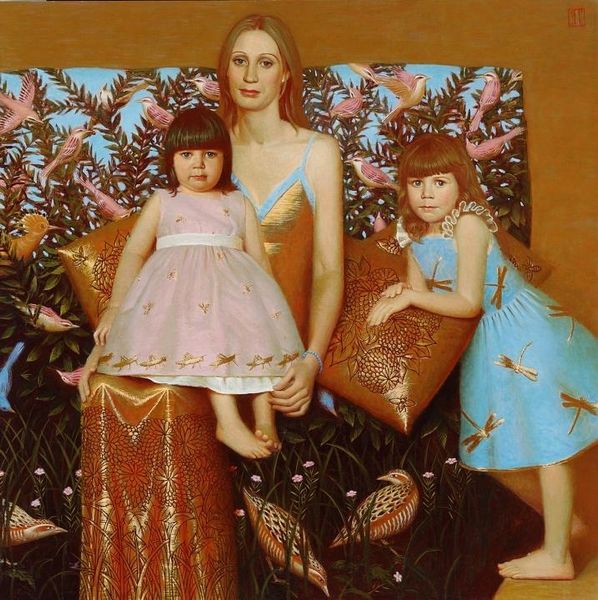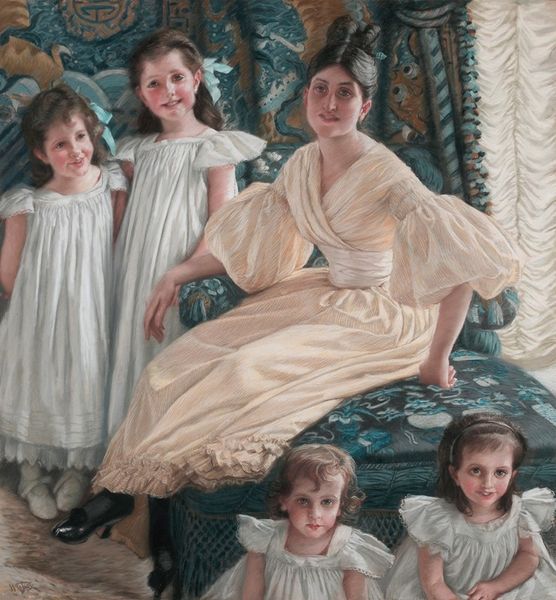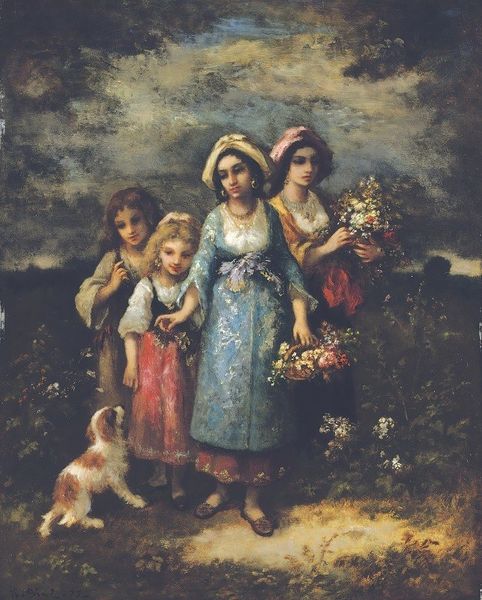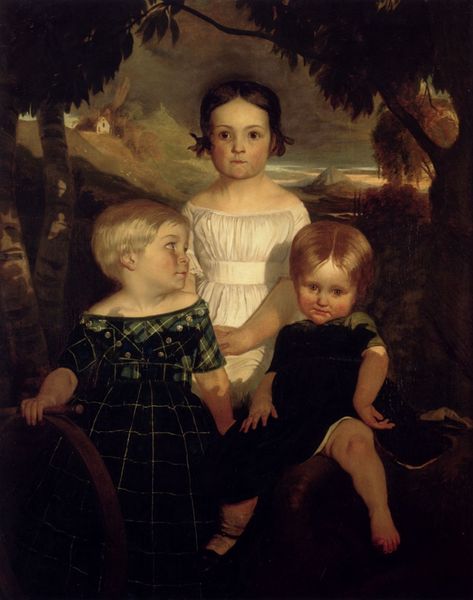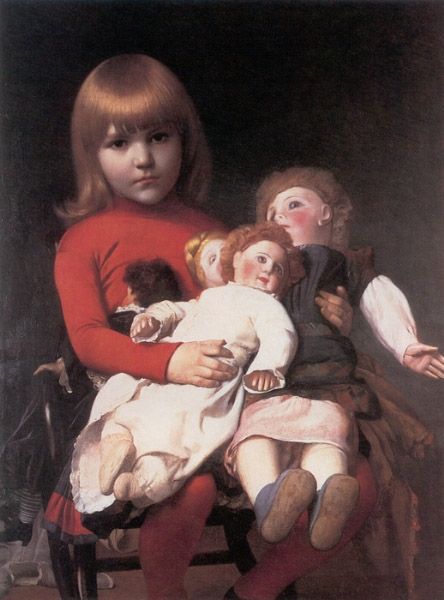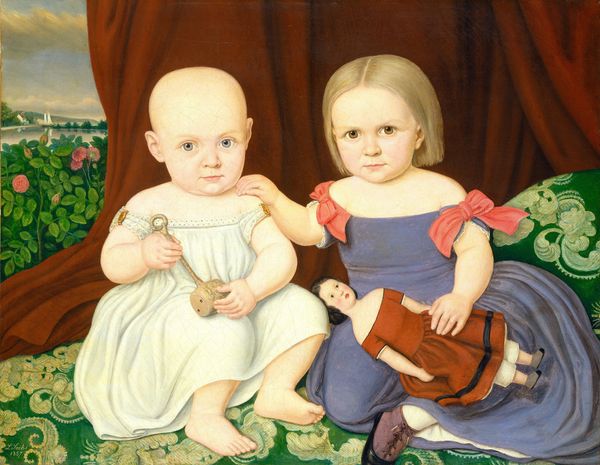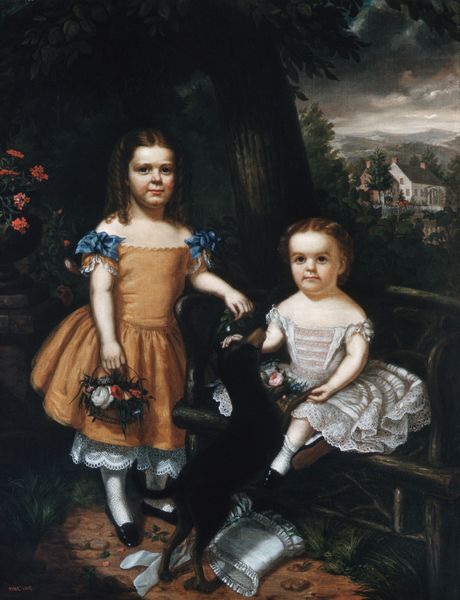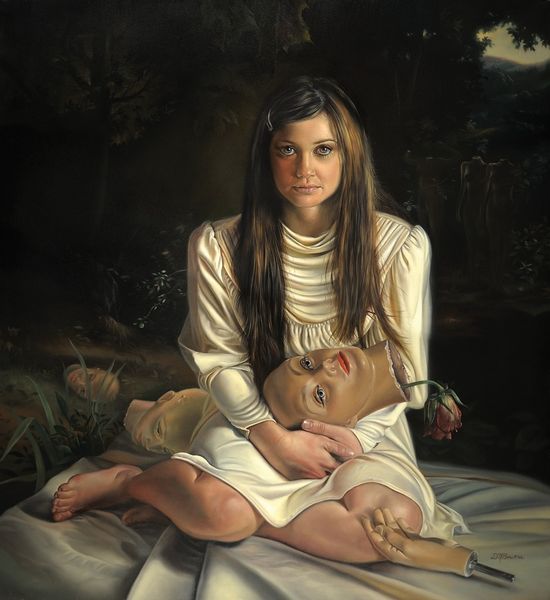
Copyright: Public domain US
Curator: Here we have Frank Cadogan Cowper's "Portait of Fraunces, Beatrice, James, and Synfye" from 1919. Editor: My first impression is one of ethereal formality. There's an almost haunting quality to their expressions. The white clothing and stark background give a definite chill. Curator: Right. Cowper worked during a period of transition. There’s the lingering influence of Academic Art combined with Romantic undertones and materials which point towards emerging industrial means of pigments production that are very interesting. It really sets the context for post war commissions and an artistic rendering of upper class families during the period. Editor: Notice the choice of symbols too? The rose clutched by the youngest child for example speaks of fragile beauty and perhaps the ephemeral nature of childhood itself. There is that pet dog too, as a stand-in for loyalty, perhaps indicating family history or generational wealth? Curator: Absolutely. One could argue that Cowper consciously employed such classical motifs as signifiers of social status. It's all a part of constructing that desired image of the time, particularly interesting since it was a group family portrait of the era. Editor: The symmetry in composition lends to a symbolic reading. It creates a rigid, hierarchical feel even amongst children which tells me that the portrait served more than just domestic needs. It really represents their position in society. Curator: And looking closely at the application of paint—thick impasto in the faces contrasted with smoother areas shows, as I see it, a blending of old techniques with new approaches borne from that inter-war tension, it mirrors the clash of tradition versus emerging modern art aesthetics during that period. Editor: I do see your point, yes. This all makes it much more than a snapshot of a family at one point in time; it's really capturing a much larger narrative in symbols, material composition and class structure. Fascinating piece! Curator: I agree. When looking at portraits like this through the lens of both making and iconology you get so much social history encapsulated on one canvas.
Comments
No comments
Be the first to comment and join the conversation on the ultimate creative platform.
